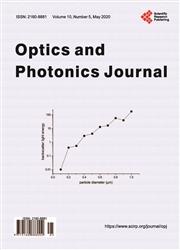Simulations of Photonic Quantum Networks for Performance Analysis and Experiment Design
引用次数: 7
Abstract
This work models metropolitan-scale photonic quantum networks that use time bin encoding for quantum key distribution and quantum state teleportation. We develop and validate theoretical models by comparing them with prior experimental results. We use our newly developed simulator of quantum network communication, called SeQUeNCe, to perform simulations at the individual photon level with picosecond resolution. The simulator integrates accurate models of optical components including light sources, interferometers, detectors, beam splitters, and telecommunication fiber, allowing studies of their complex interactions. Optical quantum networks have been generating significant interest because of their ability to provide secure communication, enable new functionality such as clock synchronization with unprecedented accuracy, and reduce the communication complexity of certain distributed computing problems. In the past few years experimental demonstrations moved from table-top experiments to metropolitan-scale deployments and long-distance repeater network prototypes. As the number of optical components in these experiments increases, simulation tools such as SeQUeNCe will simplify experiment planning and accelerate designs of new network protocols. The modular design of our tool will also allow modeling future technologies such as network nodes with quantum memories and quantum transducers as they become available.用于性能分析和实验设计的光子量子网络模拟
本研究模拟了使用时间bin编码进行量子密钥分发和量子态隐形传态的大都市尺度光子量子网络。我们建立并验证了理论模型,并将其与先前的实验结果进行了比较。我们使用我们新开发的量子网络通信模拟器,称为序列,以皮秒分辨率在单个光子水平上进行模拟。该模拟器集成了光学元件的精确模型,包括光源、干涉仪、探测器、分束器和电信光纤,允许研究它们复杂的相互作用。光量子网络已经引起了人们极大的兴趣,因为它们能够提供安全的通信,使时钟同步等新功能具有前所未有的精度,并降低某些分布式计算问题的通信复杂性。在过去的几年里,实验演示从桌面实验转向了城域规模的部署和长距离中继器网络原型。随着这些实验中光学元件数量的增加,像SeQUeNCe这样的仿真工具将简化实验计划并加速新网络协议的设计。我们工具的模块化设计还将允许对未来的技术进行建模,例如具有量子存储器和量子换能器的网络节点。
本文章由计算机程序翻译,如有差异,请以英文原文为准。
求助全文
约1分钟内获得全文
求助全文

 求助内容:
求助内容: 应助结果提醒方式:
应助结果提醒方式:


